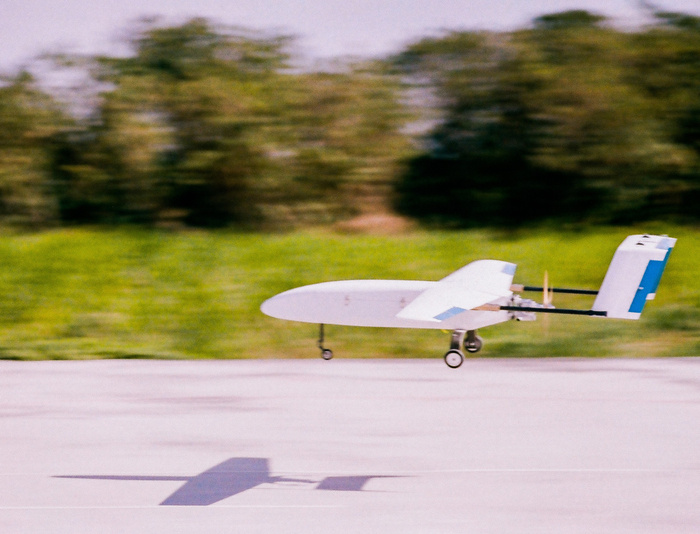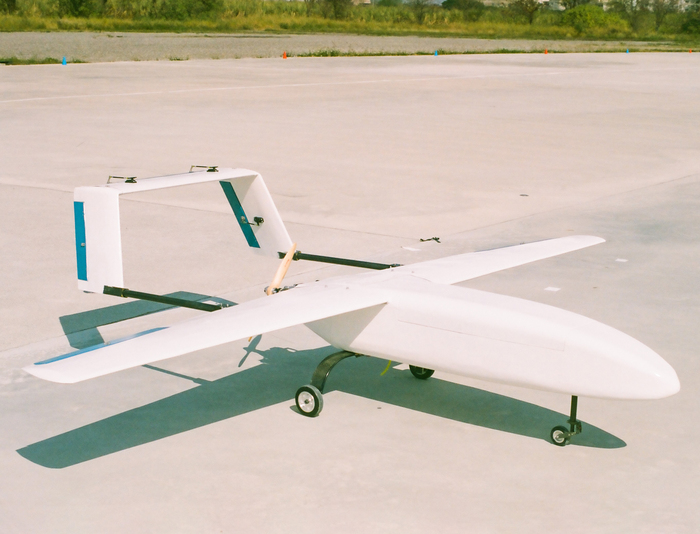National Chung Cheng University Leads in Drone Development Technology, Successfully Produces Two New Drones in One Year








As the applications of drones in various industries increase, the government has established the Asia UAV AI Innovation Application Research and Development Center in Chiayi to promote the domestic development of drones. To meet the country's development and talent demands, the team of the Mechanical Engineering Department (ME) at National Chung Cheng University (CCU) has independently handled the design, analysis, manufacturing, and testing, successfully producing two drones in just one year. This year, they have also established an industryacademia collaboration with the Formosa Plastics Group, which donated carbon fiber materials for drone manufacturing, bringing new possibilities to the university in the fields of drone technology research, teaching, and commercial use. Professor Shyh-Leh Chen, Director of the Office of Research and Development at CCU and a Distinguished Professor in the Department of Mechanical Engineering (ME), has invited and assembled a team of experts and scholars from various fields within the university to actively engage in drone-related technology development. Key members of the team include Professor Her-Terng Yau, Associate Professor Ping-Huan Kuo, Associate Professor Chih-Ying Yang, Associate Professor HangSuin Yang, Assistant Professor Yi-Chuang Wu, Assistant Professor YuChen Lin from ME, and Professor Huang-Chen Lee from the Department of Communications Engineering (COMM). The CCU drone team has successfully manufactured and test-flown two fixed-wing drones. Professor Yang, who is responsible for designing the drones, stated that the wingspan of the drones is 3 meters, and the total length of the vehicle is about 2.5 meters, featuring a fresh blue and white color. The performance of these drones is not inferior to the existing fixed-wing drones. Professor Chen mentioned that although CCU does not have an aerospace-related department, the ME faculty's joint efforts resulted in the design of these impressive drones and the successful test flight within a short period, which is a truly remarkable achievement. Professor Yang explained, "The drones designed this time adopt a fixedwing design, different from the commonly seen quadrotor aircraft. Compared to current quadrotor drones, fixed-wing drones require less thrust than their body weight, and they primarily rely on the lift generated by the wings during flight to maintain altitude." Therefore, compared to typical quadrotor drones, fixed-wing drones require less thrust, have longer flight times, cover greater distances, achieve higher speeds, and have greater payload capacity. Professor Wu, responsible for the composite material structures of the drones, stated, "The materials used in drones need to be strong and lightweight. Thus, the prototype drones developed by our university will use carbon fiber laminates layer by layer for the entire body in the future. This not only enhances the structural integrity but also reduces the need for metal materials, which effectively reduces the weight of the drones." Although the manufacturing cost of carbon fiber is relatively high, its strength is twice that of aluminum alloy, and its weight is even half that of aluminum alloy, making it very suitable for aviation applications. To ensure the safety and smoothness of the fixed-wing drone tests, every test flight is conducted by pilot instructor Tony Hong from CRCAA (Changhua Aerospace). Instructor Hong stated, "Flying can be a fascinating new experience, and each test flight is a challenge, involving many uncertain factors." He mentioned that the drone needs to idle so as to land safely, but the team encountered a problem during the first test flight. The drone's engine failed to decelerate in the air, causing it to land at high speed and resulting in damage to the nose wheel and the front of the drone. However, this test flight revealed the urgent need to adjust the rudder structure of the drone. Instructor Hong explained that universities usually prepare multiple drones for the test flight in order to face the potential damage. After all, accumulating experience from failures is crucial for ensuring safe subsequent flights. Through the team's efforts despite setbacks, the drone has successfully completed several flight tests. Professor Chen stated that the drones developed by CCU could be used in future missions such as rescue operations and terrain surveys. He explained that takeoff conditions in the field are usually not ideal. To overcome the fixed-wing drone's requirement for a runway, CCU is currently developing and testing a catapult track system, having already completed tests for a 2 kg-class small drone. They plan to develop catapults for 20 kg-class small and medium-sized drones to assist in agriculture, observation, rescue, and other tasks.

